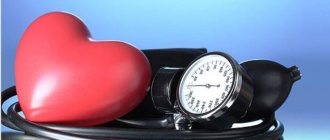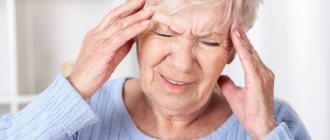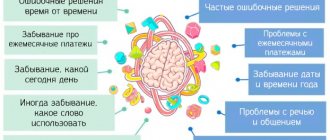Author Marina Lebedeva
09/24/2003 13:08 (Updated: 07/02/2021 23:05)
Health
Hemoglobin level is one of the most important indicators of a blood test. It may vary depending on age, lifestyle and health status. What is the normal hemoglobin level in men, what can cause deviations from the norm and how dangerous are they?
What is hemoglobin and what is it like?
Hemoglobin is a protein found in red blood cells (erythrocytes). Its main function is the transport of oxygen, which enters the bloodstream from the lungs during inhalation1. There are several options for hemoglobin in a healthy person:
- Adult hemoglobins (HbA and HbA2) make up more than 99% of all hemoglobin in the blood.
- Oxyhemoglobin (HbO2) – is formed when it binds with oxygen. In the pulmonary veins, where intense gas exchange occurs, oxyhemoglobin accounts for up to 98% of all hemoglobin.
- Carbohemoglobin (HbCO2) – is formed by binding with carbon dioxide. In venous blood, the proportion of carbohemoglobin is up to 20%.
There are also pathological forms of hemoglobin, in which the protein is unable to perform its main function. These forms include:
- Methemoglobin (MetHb) is formed during the oxidation of heme iron. Typically, cell antioxidants restore methemoglobin to normal (HbA). However, with a lack of vitamin C, taking sulfa drugs or sodium nitrite (a food preservative), the process of methemoglobin formation is accelerated, causing tissues to experience oxygen starvation.
- Carboxyhemoglobin (HbCO) is a compound of hemoglobin with carbon monoxide (CO).
- Glycosylated hemoglobin (HbA1C) – is formed when combined with glucose. Today, glycosylated hemoglobin is used in the diagnosis of diabetes mellitus. Unlike a simple blood glucose test, glycosylated hemoglobin indicates the level of sugar over the past 3-4 months (the average lifespan of red blood cells).
- Hemoglobin S (HbS) is found in the red blood cells of people with sickle cell anemia2. Hemoglobin S is less stable and copes worse with oxygen transport.
Important! The permissible rate of carboxyhemoglobin is 0.5-1.5%, depending on living conditions and air pollution. Urban residents have higher HbCO levels than rural residents. And among smokers it reaches 8-9%.
Causes of anemia
Common causes of low hemoglobin are:
- large blood loss;
- disruption of the formation of new blood cells;
- activation of pathological processes of blood destruction.
Causes of posthemorrhagic anemia
Acute posthemorrhagic anemia is the result of the loss of a large amount of blood in a minimal period of time. The chronic form of this disease is caused by:
- prolonged blood loss;
- polyps, hernias and stomach ulcers;
- kidney diseases;
- malignant tumor neoplasms;
- uterine bleeding;
- disorders of the blood clotting system;
- liver failure, cirrhosis.
What causes hemolytic anemia
All hemolytic anemias occur if “old” red blood cells begin to destroy faster than new ones can form.
The sickle cell form is caused by the synthesis of a defective hemoglobin molecule. The emerging defective molecules form peculiar crystals that stretch the red blood cell, causing the latter to take on the shape of a sickle. Sickle erythrocytes are non-plastic. It leads to increased blood viscosity and blockage of small blood vessels. With their sharp ends they can destroy each other.
Thalassemia is a hereditary disease. It occurs due to a decrease in the rate of hemoglobin formation. Hemoglobin that is not fully formed is unstable. It resembles small inclusions that give the red blood cell the appearance of a target cell.
Deficiency anemias and their causes
Iron deficiency anemia develops for reasons such as:
- lack of iron/increased need for iron (this is why degree 1 anemia is often diagnosed in premature babies and pregnant women);
- chronic blood loss;
- problems associated with the absorption of iron from the gastrointestinal tract, its transportation and disposal.
B12 deficiency anemia is caused by a lack of vitamin B12. The disease can be caused by poor nutrition (refusal to eat meat) or disruption of the absorption of cyanocobalamin in the gastrointestinal tract (parasites, diseases of the small intestine, stomach). Also, symptoms of B12 deficiency anemia can appear while taking hormonal drugs and anticonvulsants.
Folate deficiency anemia is a consequence of a lack of vitamin B9. It is usually observed in pregnant and lactating women, cancer patients, teenage children, premature newborns, liver disease, alcohol abuse, etc.
Causes of hypoplastic anemia
Hypoplastic anemia is manifested by a decrease in the content of all cells in the blood. External and internal factors lead to such a pathological and life-threatening condition:
- vibration and radiation effects on the body;
- serious injuries;
- taking certain medications;
- ingestion of poisons into the body;
- herpes, fungi, bacteria;
- genetic mutations;
- rheumatoid arthritis, lack of elements involved in hematopoietic processes;
- endocrine diseases, etc.
Blood test for hemoglobin
Most often, hemoglobin is determined as part of a clinical blood test. It is carried out for preventive purposes, during dispensary observation and in order to identify a number of diseases.
Hemoglobin in a general blood test (Hgb, Hb) reflects the amount of protein per unit volume. Expressed in grams per deciliter or liter (g/dl, g/l). For example, 14 g/dl, which corresponds to 140 g/l.
You need to donate blood on an empty stomach in a calm environment. Photo: repinanatoly / freepik.com
Indications for analysis
Every person who monitors their health should do a general blood test once a year. Regular examinations make it possible to detect diseases at an early stage of development. Some categories of people need to donate blood more often. For example, this applies to pregnant women who need to constantly monitor blood counts in order to avoid hypoxia (oxygen starvation) of the fetus and other disorders.
A general blood test (including hemoglobin) is carried out in the following cases:
- preventive examination;
- control studies to monitor treatment results;
- diagnosis of a wide range of diseases;
- examinations before surgery or other types of treatment;
- analysis before prescribing certain drugs;
- pregnancy and other special conditions requiring health monitoring.
To conduct a general analysis, blood is usually taken from a finger (less often from a vein). The healthcare professional makes a small, almost painless puncture. To determine glycosylated hemoglobin, blood is taken from a vein. The blood is then placed into a special analyzer, which counts the formed elements (various types of cells). Counting cells manually under a microscope is considered more accurate. However, today manual counting is almost never used, since it is a rather labor-intensive process.
Preparing for analysis
To obtain correct results, it is important to properly prepare for donating blood. To do this, follow these recommendations:
- Blood must be donated in the morning on an empty stomach. The last meal should be no later than 8 hours before blood sampling. In this case, it is better to make dinner the night before light.
- For several days before the analysis, it is advisable to avoid eating fatty foods. This is due to the fact that such food promotes increased production of leukocytes, which distorts the blood formula.
- 2-3 days before donating blood, you should not drink alcoholic beverages (including beer).
- Donating blood should be done in a calm environment. Physical or emotional stress is contraindicated before the test. Otherwise you will get skewed results.
- If you are a smoker, you should stop smoking at least 1-2 hours before the collection.
If you are taking any medications, consult your doctor in advance. In the laboratory or clinic where you will donate blood, be sure to notify the laboratory technician about your recent use of a particular drug.
Norm of hemoglobin in blood by age and gender
Figure 1. Blood cells in a healthy person and with anemia.
Image: mikrostoker / Depositphotos Normal hemoglobin levels vary depending on age and gender. For example, men have a higher rate than women. This is due to more developed muscle mass, which requires proper oxygen supply. With age, hemoglobin levels also change. This is explained by hormonal changes, slowdown of metabolic processes and other age-related changes.
Hemoglobin in women
In women, hemoglobin drops during pregnancy and menstruation.
For a pregnant woman, the norm is 112-165 g/l in the first, 108-144 g/l in the second and 110-140 g/l in the third trimester of pregnancy. The decrease in protein during pregnancy is associated both with hormonal changes and with the fact that part of the hemoglobin is spent on the needs of the fetus. Hemoglobin also drops to 110 g/l (and even lower) during menstruation, especially if they are heavy. Hemoglobin levels in women range from 117-155 g/l.
In old age, the upper normal limit is 174 g/L. For men over 18 years of age, the norm is 132-173 g/l; in elderly men – 126-174 g/l (Table 1). Table 1. Norms of hemoglobin in blood by age and gender
| Age | Floor | Hb level g/l |
| 18-45 years old | Women | 117-155 |
| Men | 132-173 | |
| 45-65 years | Women | 117-160 |
| Men | 131-172 | |
| Over 65 years old | Women | 120-161 |
| Men | 126-174 |
Hemoglobin levels differ in children and adults.
In newborns, the concentration of hemoglobin in the blood is maximum. After a few weeks it begins to fall. Stable hemoglobin levels appear only after 6 months of age. Table 2 shows hemoglobin norms for boys and girls. Table 2. Hemoglobin norms (g/l) in children by age and gender
| Age | Boys | Girls |
| from 0 to 15 days. | 160 — 200 | 160 — 200 |
| 1 - 3 months | 120 — 160 | 120 — 160 |
| 4 - 6 months | 95 — 140 | 95 — 140 |
| 6 - 12 months | 110 — 145 | 114 — 150 |
| 1 - 2 g. | 110 — 130 | 110 — 130 |
| 2 - 5 l. | 105 — 150 | 105 — 145 |
| 5 - 11 l. | 110 — 140 | 110 — 140 |
| 12 - 14 l. | 120 — 140 | 120 — 140 |
| 15 - 17 l. | 120 — 155 | 120 — 150 |
Normal content of glycosylated hemoglobin
In men, women and children, the level of glycosylated hemoglobin should not exceed 6.5%3. For persons 45-65 years old, the normal rate is increased to 7%. People whose HbA1C level is between 7-7.5% are at risk. Some of them are diagnosed with prediabetes. For persons over 65 years of age, rates of up to 8% are considered normal.
Causes of elevated hemoglobin
Changes in hemoglobin levels can be provoked by both physiological and pathological factors. A physiological increase (occurring under certain circumstances in a healthy person) does not require treatment, since the condition is temporary and will return to normal in the near future.
A physiological increase in hemoglobin is observed in hot weather and with insufficient fluid intake. Under such circumstances, the blood thickens and the concentration of red blood cells (and therefore hemoglobin) increases. Dehydration is a dangerous condition, but it can be quickly corrected by drinking water.
Living in high altitude conditions is another reason for the physiological increase in hemoglobin. This is due to the fact that in the mountains there is less oxygen, which is why more red blood cells circulate in the blood. This is an adaptation mechanism that allows people to adapt to life in the mountains.
High hemoglobin is also observed in smokers (due to high carboxyhemoglobin content) and athletes.
Pathological causes of increased hemoglobin include:
- Dehydration caused by prolonged vomiting or diarrhea (diarrhea). Such a patient urgently requires treatment to restore water-salt balance.
- Diabetes.
- Erythrocytosis – increased production of red blood cells.
- Oncological diseases.
- Cardiovascular diseases.
- Hypovitaminosis of B vitamins.
- Diseases of the respiratory system.
- Diseases of the hematopoietic system.
Increased hemoglobin may be accompanied by the following symptoms:
- increased fatigue;
- headache, dizziness;
- drowsiness (less often insomnia);
- high blood pressure;
- loss of appetite;
- pain and colic in the abdomen;
- skin itching.
High hemoglobin and risk of blood clots
With increased hemoglobin, the blood becomes viscous and thick. There is an increased risk of blood clots. Therefore, persons with elevated hemoglobin should definitely consult a doctor. To reduce the risk of blood clots, the patient is prescribed antithrombotic drugs that thin the blood.
Causes of low hemoglobin
Most often, low hemoglobin indicates errors in nutrition. People who are addicted to diets do not receive enough necessary vitamins and minerals (in particular iron), which leads to a decrease in pigment concentration. Low hemoglobin is often observed in vegetarians. Meat is the main source of iron, amino acids and a number of vitamins. Excluding meat from the diet is fraught with the development of iron deficiency anemia and other pathological conditions.
Figure 2. Symptoms of anemia. Image: IgdeevaAlena / Depositphotos
Other causes of low hemoglobin include:
- Worms. Due to intestinal parasites, a person does not receive the lion's share of nutrients, vitamins and microelements, in particular iron.
- Diseases of the digestive system . In some pathologies of the small intestine, the absorption of substances is impaired.
- Bleeding. This may be internal (hidden) bleeding. This condition requires immediate medical attention.
With low hemoglobin, the following symptoms are possible:
- dyspnea;
- noise in ears;
- pale skin;
- cardiopalmus;
- increased fatigue and weakness;
- cracks in the corners of the lips;
- leg muscle cramps;
- the appearance of black spots on the nails;
- sleep disturbance;
- low blood pressure;
- brittle nails and hair;
- dizziness, migraines;
- fragility and hair loss;
- deterioration of dental condition (caries, yellow teeth);
- bright red color of the tongue.
Symptoms and causes of low hemoglobin
Insufficient hemoglobin content in the blood provokes frequent fatigue, malaise, drowsiness, loss of strength, and bad mood. Patients also complain of constant headache and dizziness. In addition, there is pallor of the skin, poor appetite, tinnitus, cold hands and feet, perversion of taste, pain in the muscles, and the frequent development of colds and viral infections.
In severe cases, the person may lose consciousness. Therefore, in this case, you should definitely visit a doctor and undergo the necessary tests.
Nothing happens for nothing. Including hemoglobin, it cannot decrease without reason. This deficiency in the body is indicated by serious diseases and certain conditions:
- Iron deficiency anemia in chronic form.
- Various bleeding.
- Long-term gastritis.
- Inflammatory bowel pathologies, dysbiosis.
- Time period after surgery.
- Oncology of blood cells.
- Neoplasms in the digestive tract.
- Hepatitis.
- Tuberculosis, pneumonia.
- Iron deficiency.
- Vitamin B12 and folic acid deficiency.
- Destruction of the structure of red blood cells due to severe pathologies.
- Following a diet that involves limiting a large amount of food.
The reasons for a decrease in hemoglobin can be various conditions. However, the greatest impact on protein deficiency is exerted by various blood losses due to surgery, trauma, wounds, and hemorrhoids.
In females, a decrease in hemoglobin most often occurs during menstruation, which lasts more than 5 days.
How to increase or decrease hemoglobin in the blood
Iron-containing foods help increase hemoglobin.
Photo: bit245 / Depositphotos Most often, it is possible to increase hemoglobin by changing the diet. To do this you need to eat iron-containing foods. Iron is found in large quantities in meat (especially beef), poultry and fish. Organic acids present in vegetables help iron to be absorbed well, so it is better to eat meat with vegetables. But phytins contained in bread, lentils and spinach interfere with the absorption of iron, which means they can reduce hemoglobin levels.
Iron-containing drugs, which are prescribed for anemia, pregnancy and other conditions, will also help raise hemoglobin.
Accordingly, you can reduce your hemoglobin level by reducing your consumption of iron-containing foods. If high hemoglobin is caused by pathology, then first of all it is necessary to eliminate the root cause.
How to boost a low level
Most often, older people suffer from iron deficiency anemia, which can be determined by the color index of the blood, as well as the ratio of various elements. When wondering how to increase hemoglobin, it is necessary to treat not the consequences of the disease, but to eliminate the factors that caused it.
To increase protein levels, a patient with low hemoglobin in the blood is prescribed iron supplements. It is important that they contain a sufficient amount of divalent iron, as well as components that improve the absorption of its ions. Often, these medications are taken twice a day with meals. At the same time, you should never prescribe medications yourself, since the content of the drug can cause side effects. Old people may experience disturbances in the functioning of the digestive tract, inflammation of the vascular walls of the veins, hypotension and an allergic reaction. Another fairly common side effect is chest pain. Therefore, drugs to increase hemoglobin should be prescribed exclusively by a specialist who will take into account all the individual characteristics of the body.
You can also get rid of anemia by following a proper and balanced diet. Products that increase hemoglobin in the blood of the elderly are:
- sausages and meat products;
- offal;
- black currant;
- fish;
- egg yolks;
- wheat sprouts and wheat germ;
- greens and cabbage;
- whole grain baked goods;
- nuts and seeds;
- beet;
- dried fruits (figs, prunes, dried apricots, dates).
Such nutrition with low hemoglobin can raise its level and help permanently get rid of the manifestations of anemia at an early stage of the disease.









